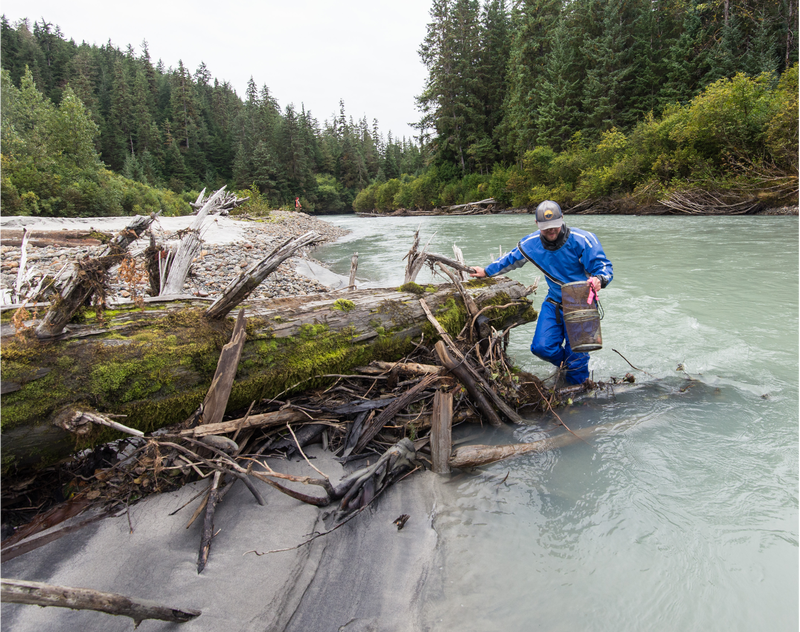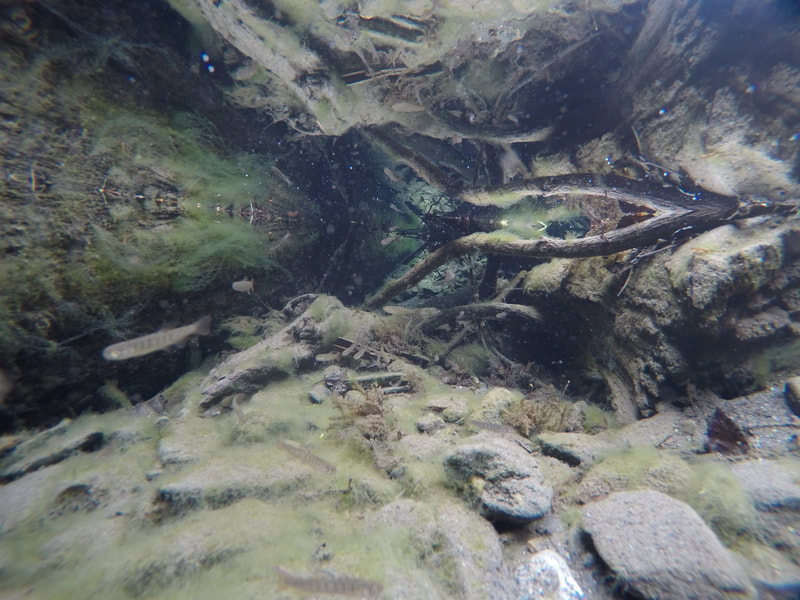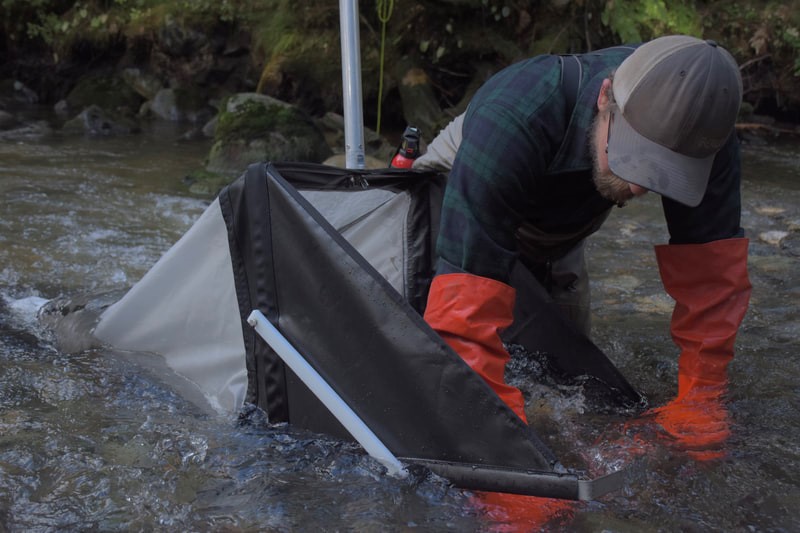From Glaciers to Streams: Understanding the Shifts in Southeast Alaska's Aquatic Communities

Rapid glacial retreat across Southeast Alaska is reshaping coastal watersheds from the base of the food web up, and shifting invertebrate communities could lead to less stable aquatic communities as unique hydrologic conditions in glacial and snow-fed streams disappear. Former ACRC graduate student Matt Dunkle recently published a new research paper that explores how the diversity of water sources in Southeast Alaska influences freshwater invertebrate community diversity and productivity.
Climate change is restructuring the cryosphere in Southeast Alaska by causing some of the fastest rates of glacier mass decline in the world and increasing shifts from winter snow to rain. Coastal watersheds are heavily influenced by meltwater and contributions of glacial runoff and snowmelt in these ecosystems are expected to diminish and disappear. Understanding the effects of meltwater changes on coastal watersheds can help forecast their future stability and capacity to support upper trophic levels, such as fish.
Coastal watersheds in Southeast Alaska support populations of Pacific salmon, Dolly Varden, and Coastrange Sculpin, which rely on the production of aquatic invertebrates for growth during early freshwater rearing. Understanding the effect of meltwater contributions on invertebrate production can help us understand how hydrologic changes will affect consumers like fish. Invertebrate community structure and secondary production can be isolated and described using studies that investigate invertebrate communities in streams with varying levels of meltwater influence.
 Led by Dunkle, the team sampled salmon spawning habitat across four stream types: a glacially dominated stream, an alpine snow-fed stream, a rain-fed stream, and a transitional stream reflecting a combination of freshwater sources. Over the course of 13 months, they collected water chemistry and invertebrate samples. Sample analysis included Dunkle identifying and measuring over 70,000 insects of 130 different taxa by hand, which revealed the highest biodiversity within the snow-fed stream and the lowest within the glacier-fed stream, which also measured the lowest annual secondary production. Despite low invertebrate diversity and productivity, the glacier-fed stream hosted distinct invertebrate species associated with its unique cycles of stream flow, water temperature, turbidity, and nutrient concentrations, which contributed to an overall higher biodiversity across all the sampled stream ecosystems combined.
Led by Dunkle, the team sampled salmon spawning habitat across four stream types: a glacially dominated stream, an alpine snow-fed stream, a rain-fed stream, and a transitional stream reflecting a combination of freshwater sources. Over the course of 13 months, they collected water chemistry and invertebrate samples. Sample analysis included Dunkle identifying and measuring over 70,000 insects of 130 different taxa by hand, which revealed the highest biodiversity within the snow-fed stream and the lowest within the glacier-fed stream, which also measured the lowest annual secondary production. Despite low invertebrate diversity and productivity, the glacier-fed stream hosted distinct invertebrate species associated with its unique cycles of stream flow, water temperature, turbidity, and nutrient concentrations, which contributed to an overall higher biodiversity across all the sampled stream ecosystems combined.
These patterns suggest that as glacial meltwater contributions are lost, freshwater invertebrate biodiversity and secondary production will likely increase, while the overall biodiversity across different stream ecosystems will decrease due to the loss of unique invertebrate communities in glacier-fed streams. This potential increase in invertebrate production may support more fish, but at the cost of overall ecosystem stability.
“The assumption is; a warmer Alaska is going to mean more salmon production. As the landscape warms, as glacial streams fade and eventually disappear, we are probably going to see an increase in aquatic invertebrate production but it is going to come at the cost of these communities becoming more similar, potentially losing some cold water specialist taxa, and we are also going to potentially be merging the seasonal dynamics of the aquatic community towards a more synchronous pattern. And that is going to have implications for juvenile salmon,” explains Dunkle.

“Right now we have all of these different waves of (resource) conditions across the landscape. These lower productivity areas, at certain times of the year, are the most productive place on the landscape. Glacial rivers can have a relatively high productivity early in the spring before the glacier turns on, and during that period, glacial systems might be the most productive and the optimal place for the juvenile salmon to be. And we also have seen that in some really dry years, glacial rivers have water when other streams around the landscape might not. As we lose some of that diversity, those (resource) waves might merge together. It's better for juvenile fish to have a little bit of food throughout their life, rather than just having one giant slug of food at one time during the year.”
This research highlights the complex interplay between the melting cryosphere and coastal watershed ecosystems in Southeast Alaska that many communities rely on for subsistence harvest. Continued research into the effects of invertebrate production and biodiversity in the context of consumption by fish, birds, and other consumers will play a crucial role in future conservation and adaptation planning, and may impact economic, cultural, and recreational activities in Alaskan communities.
ACRC researcher Jason Fellman, US Forest Service scientist Ryan Bellemore, and Christopher Caudill of the Department of Fish and Wildlife Sciences at the University of Idaho were co-authors on the paper published in the journal of Limnology and Oceanography.
